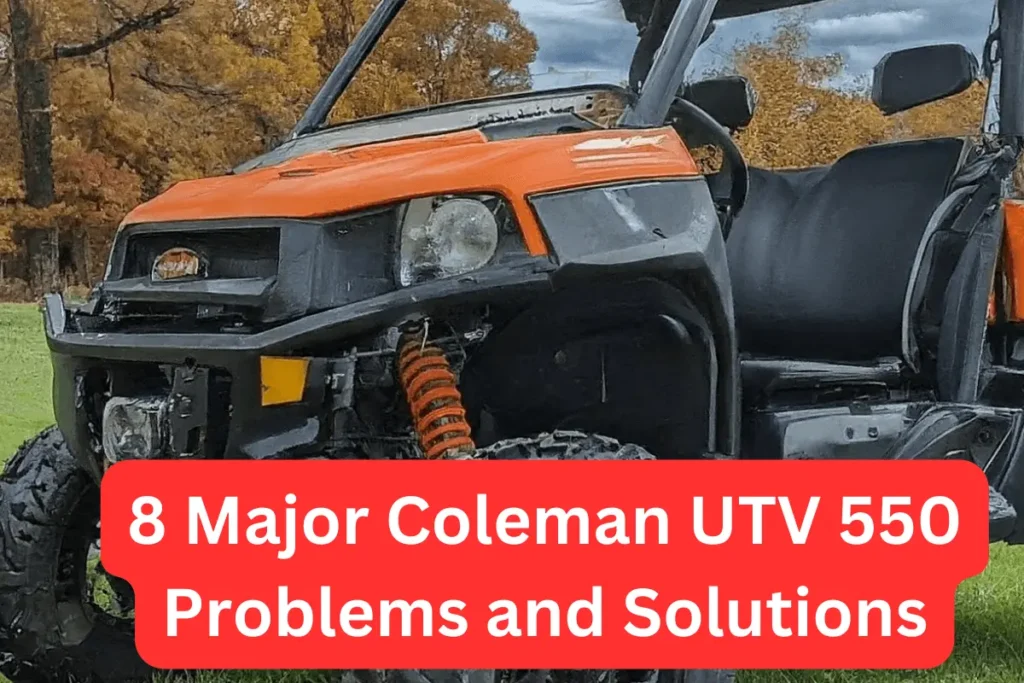The Polaris Ranger 700 XP is a popular utility vehicle known for its versatility and performance. However, like other vehicles, its owners also face problems with it.
The most common Polaris Ranger 700 XP problems are starting, ECM, TPS sensor, shifting, air conditioning, clutch, and ignition switch problems.
Polaris Ranger 700 XP Common Problem
Here are 8 major problems of Ranger 700 XP with their easy solutions. I will also recommend you to read Polaris Ranger 900 XP problems because most of them are also found in it.
1. Polaris Ranger 700 XP starting problems
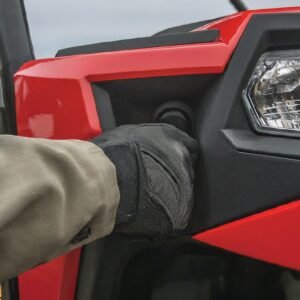
If you’re having trouble starting your Polaris Ranger 700 XP, there could be a few reasons why. Let’s break it down to help you determine what might happen.
- Battery Issues: The first thing to check is your battery. Make sure it’s fully charged and in good condition. If the battery is old or weak, it might need more power to start the engine.
- Fuel Problems: Check if there’s enough fuel in the tank. Sometimes, running out of fuel or having old fuel can cause starting issues. Make sure the fuel is clean and fresh.
- Spark Plug: A faulty spark plug can also prevent your Ranger from starting. Make sure the spark plug is not dirty, damaged, or worn out. If it is, you’ll need to replace it.
- Ignition System: The ignition system, including the ignition switch and wiring, could be causing the problem. Check for any loose connections or damaged wires that might be preventing the electricity from reaching the engine.
- When the air filter is clogged, it restricts airflow to the engine, making it difficult to start. If necessary, clean or replace the air filter.
- Engine Flooded: If you’ve been trying to start the engine multiple times without success, it might be flooded. Let the engine sit for a while to allow excess fuel to evaporate before trying again.
- Starter Motor: The starter motor could be faulty or worn out, making it unable to turn the engine over. Listen for any unusual sounds when you try to start the Ranger, which could indicate an issue with the starter motor.
- Safety Switches: Some Polaris models have safety switches that must be engaged for the engine to start. Check if all the safety switches are in the correct position.
- Compression Issues: Lastly, if none of the above solutions work, there could be compression issues within the engine itself. This would require professional inspection and repair.
2. Polaris Ranger ECM problems

The ECM is like the brain of your Ranger’s engine. It controls various functions, such as fuel delivery, ignition timing, and emissions systems, to ensure optimal performance and efficiency. When the ECM malfunctions, it can lead to a range of problems, including poor engine performance, starting issues, and even stalling.
Here are some common ECM problems and potential solutions:
- Faulty Sensors: The ECM relies on input from various sensors to make decisions about engine operation. If any of these sensors are faulty or malfunctioning, it can cause the ECM to misinterpret data and make incorrect adjustments. Check for sensor malfunctions by using a diagnostic scanner to read trouble codes stored in the ECM. Replace any faulty sensors as needed.
- Corrosion or Moisture Damage: The ECM is typically located in the engine compartment, where it’s exposed to heat, moisture, and other elements. Over time, this exposure can lead to corrosion or moisture damage, causing the ECM to malfunction. Inspect the ECM and its connectors for signs of corrosion or water ingress. If you find any, clean the affected areas and seal any openings to prevent further damage.
- Electrical Issues: Poor electrical connections or wiring problems can also cause ECM issues. Check all electrical connections leading to the ECM for tightness and signs of damage. Inspect the wiring harness for any frayed or damaged wires, and repair or replace them as needed.
- Software Glitches: Like any computerized system, the ECM can experience software glitches or bugs that cause it to malfunction. In some cases, reprogramming or updating the ECM’s software can resolve these issues. Contact your local Polaris dealer or authorized service center to inquire about software updates for your Ranger’s ECM.
- Physical Damage: In rare cases, physical damage to the ECM itself can cause it to malfunction. Inspect the ECM for signs of physical damage, such as cracks or broken components. If you suspect physical damage, you may need to replace the ECM entirely.
If you’re unable to diagnose or resolve the ECM problem on your own, it’s best to seek assistance from a qualified mechanic or Polaris dealer. They have the expertise and specialized tools necessary to diagnose and repair ECM issues effectively.
Also explore the offroad vehicles
3. TPS Sensor Problem

The Throttle Position Sensor (TPS) plays a crucial role in your vehicle’s performance by monitoring the position of the throttle pedal and sending signals to the engine control unit (ECU). This helps regulate the amount of fuel and air entering the engine, ultimately affecting the speed and power of your vehicle.
When there’s a problem with the TPS, you may notice various symptoms such as:
- Inconsistent Engine Performance: Your Polaris Ranger may exhibit erratic behavior such as sudden stalling, rough idling, or difficulty accelerating smoothly.
- Engine Warning Lights: The TPS issue can trigger warning lights on your dashboard, such as the Check Engine Light (CEL), indicating a problem that needs attention.
- Poor Fuel Efficiency: A malfunctioning TPS can cause the engine to receive incorrect signals, leading to fuel wastage and reduced mileage.
If you suspect a TPS problem, here are some steps you can take to diagnose and resolve the issue:
- Check for Fault Codes: Modern vehicles are equipped with onboard diagnostic systems that can retrieve fault codes related to various components, including the TPS. Using a diagnostic scanner, you can read these codes to pinpoint the specific problem affecting your Polaris Ranger.
- Inspect TPS Wiring and Connections: Sometimes, the issue may not lie with the sensor itself but rather with its wiring or connections. Make sure the wiring harness connected to the TPS is secure and free from damage or corrosion. Loose connections or frayed wires can disrupt the signal transmission between the sensor and the ECU.
- Test TPS Voltage: With the help of a multimeter, you can measure the voltage output of the TPS as you manually manipulate the throttle. The voltage should increase smoothly and consistently as you open the throttle, indicating proper TPS functionality. Any irregularities in voltage readings may suggest a faulty sensor.
- Clean or Replace the TPS: Over time, the TPS can accumulate dirt, debris, or wear out due to mechanical stress. In such cases, cleaning the sensor may help restore its proper function. However, if cleaning doesn’t resolve the issue, you may need to replace the TPS altogether with a new one.
- Consult a Professional Mechanic: If you’re unsure about diagnosing or fixing the TPS problem on your own, it’s advisable to seek assistance from a qualified mechanic or technician. They have the expertise and tools necessary to accurately diagnose the issue and perform any required repairs or replacements.
4. Polaris Ranger 700 XP Shifting Problems
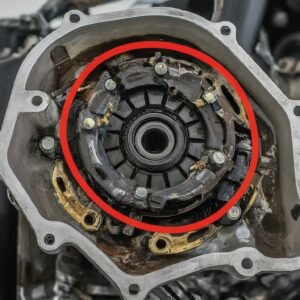
If you’re having trouble shifting gears in your Polaris Ranger 700 XP, there are a few things you can check and try to fix the problem.
- Check Fluid Levels: Make sure that the transmission fluid level is adequate. Low fluid levels can cause shifting issues. Refer to your owner’s manual for instructions on how to check and refill the fluid.
- Inspect Shifter Linkage: The linkage that connects the gear shifter to the transmission might be damaged or misaligned. Inspect it for any signs of wear, looseness, or damage. If necessary, adjust or replace the linkage.
- Clutch Adjustment: Improper clutch adjustment can also cause shifting problems. Check the clutch adjustment according to the manufacturer’s specifications. If it’s out of adjustment, adjust it properly.
- Clean or Replace Clutch Components: Clutch components such as the clutch plates or springs can wear out over time, leading to shifting difficulties. Check these components for wear and replace them if necessary.
- Check for Obstructions: Sometimes, debris or objects can get lodged in the shifter mechanism, preventing smooth shifting. Inspect the shifter area for any obstructions and remove them.
- Inspect the Transmission: If none of the above steps solve the issue, there might be a problem with the transmission itself. In this case, it’s best to consult a professional mechanic or take your vehicle to an authorized Polaris service center for diagnosis and repair.
- Software Update: In some cases, shifting issues can be due to software glitches in the vehicle’s electronic control module (ECM). Check with your Polaris dealer if there are any software updates available for your Ranger model.
- Driving Habits: Ensure that you’re operating the vehicle correctly. Shifting too aggressively or not coming to a complete stop before shifting gears can cause problems. Practice smooth and deliberate shifting to see if it improves the situation.
5. Ignition Switch Problems
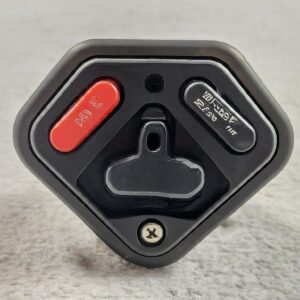
The ignition switch is a crucial component that allows you to start your vehicle by providing power to the starter motor, ignition system, and other essential components. When you turn the key, it completes the circuit and allows electricity to flow, starting the engine.
Now, onto the problems you might encounter with your ignition switch. One common issue is when the switch fails to turn or gets stuck in the “on” or “off” position. This can happen due to wear and tear over time, dirt or debris getting lodged in the switch, or electrical issues.
Another problem is when the switch fails to make proper contact, resulting in intermittent starting issues or no start at all. Corroded or loose connections within the switch or the wiring harness can cause this.
So, what can you do if you’re experiencing ignition switch problems? Here are some steps you can take:
- Inspect the Switch: Start by visually inspecting the ignition switch for any signs of damage, corrosion, or debris. Clean the switch and the surrounding area if necessary.
- Check the Connections: Make sure all the connections to the ignition switch are tight and secure. Loose connections can cause intermittent starting problems.
- Test the Voltage: Use a multimeter to test the voltage at the ignition switch terminals. This can help you identify any electrical issues that may be causing the problem.
- Consider Replacement: If the ignition switch is visibly damaged or fails the voltage test, it may need to be replaced. You can purchase a replacement switch from a Polaris dealer or authorized retailer.
- Consult a Professional: If you’re not comfortable diagnosing or replacing the ignition switch yourself, it’s best to consult a professional mechanic or technician who has experience working on Polaris vehicles.
Also, read the Polaris Ranger 1000 problems
6. Polaris Ranger 700 XP Air conditioning problems
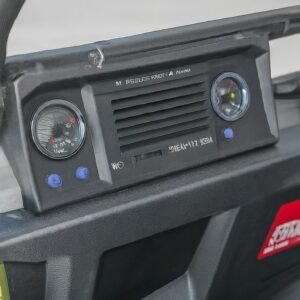
If you’re experiencing issues with the air conditioning in your Polaris Ranger, there could be several reasons behind it. Here’s a breakdown of some common problems and what you can do about them:
- Low Refrigerant Levels: One of the primary reasons for air conditioning problems is low refrigerant levels. Over time, refrigerant can leak out of the system, causing the AC to blow warm air. You may need to have a professional mechanic check for leaks and recharge the refrigerant if necessary.
- Faulty Compressor: The compressor is responsible for circulating the refrigerant through the AC system. If the compressor is faulty or not working properly, it can result in poor cooling performance or no cooling at all. A mechanic can inspect the compressor and replace it if needed.
- Clogged Air Filter: A clogged air filter can restrict airflow and reduce the efficiency of the AC system. If the air filter is dirty, clean it or replace it. This simple maintenance task can often improve AC performance.
- Faulty Blower Motor: The blower motor blows air into the cabin. If it’s malfunctioning, you may experience weak airflow or no airflow at all from the vents. A mechanic can diagnose the issue and replace the blower motor if necessary.
- Electrical Problems: Issues with electrical components such as fuses, relays, or wiring can also cause air conditioning problems. Check the fuses related to the AC system and inspect the wiring for any signs of damage. If you’re not comfortable with electrical work, it’s best to have a professional technician handle it.
- Condenser Issues: The condenser is responsible for releasing heat from the refrigerant. If it’s damaged or blocked by debris, it can affect the cooling performance of the AC system. Make sure the condenser is clean and free from any obstructions.
- Thermostat Problems: If the thermostat is malfunctioning, it may not accurately control the temperature inside the cabin. This can result in inconsistent cooling or no cooling at all. Consider replacing the thermostat if you suspect it’s faulty.
- Seals and Hoses: Leaks in the seals or hoses of the AC system can also cause problems. Inspect the seals and hoses for any signs of leaks or damage. Replace any faulty components to prevent refrigerant from escaping.
If you’re unable to diagnose or fix the air conditioning problem yourself, it’s best to consult with a qualified mechanic or technician who has experience with Polaris Ranger vehicles. They can accurately diagnose the issue and perform the necessary repairs to get your AC system working properly again.
7. Clutch Issues
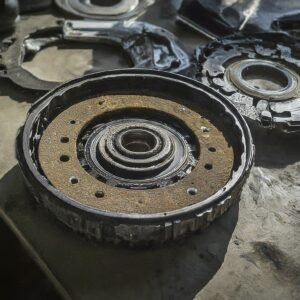
The clutch in your Polaris Ranger 700 XP is responsible for transferring power from the engine to the wheels. It helps to engage and disengage the engine’s power to control the vehicle’s speed and movement.
Now, let’s address some common clutch problems you might encounter:
- Slipping Clutch: This happens when the clutch fails to fully engage, causing a loss of power and acceleration. It may feel like the engine is revving, but the vehicle isn’t moving as it should. Slipping can be caused by worn clutch components, such as clutch plates or springs.
- Clutch Dragging: When the clutch doesn’t disengage completely, even when you’re not pressing the pedal, it’s called clutch dragging. This can make shifting gears difficult or cause grinding noises. It might be due to hydraulic issues, like air bubbles in the clutch fluid, or mechanical problems with the clutch linkage.
- Clutch Noise: Unusual noises like rattling, grinding, or squealing when you engage or disengage the clutch could indicate various issues. These might include worn-out bearings, damaged clutch components, or misalignment.
- Clutch Overheating: If you notice a burning smell coming from the clutch or feel excessive heat in the clutch area, it could be overheating. Overheating can occur due to excessive slipping, heavy use, or improper adjustment.
- Clutch Engagement Issues: Difficulty in engaging gears or a stiff clutch pedal can make driving uncomfortable and challenging. This might be caused by worn-out clutch linkage, air in the hydraulic system, or improper clutch adjustment.
Gain your knowledge by reading Polaris Ranger Clutch problems.
8. Low Fuel Pressure Issue
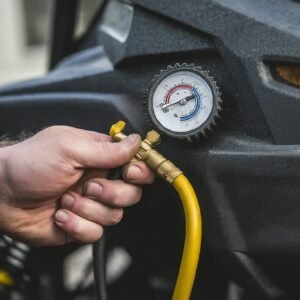
Low fuel pressure means that the fuel system isn’t delivering an adequate amount of fuel to the engine for proper combustion. This can lead to various performance issues such as sputtering, stalling, or difficulty starting the vehicle. In severe cases, it may even cause engine damage.
Common Causes:
- Clogged Fuel Filter: Over time, the fuel filter can become clogged with debris or sediment, restricting the flow of fuel.
- Faulty Fuel Pump: The fuel pump may be failing, causing insufficient fuel to be pumped into the engine.
- Leaking Fuel Lines: Any leaks in the fuel lines can result in a loss of pressure within the system.
- Dirty Fuel Injectors: If the fuel injectors are dirty or clogged, they may not be able to deliver fuel efficiently to the engine.
Steps to Resolve the Issue:
- Inspect the Fuel Filter: Start by checking the fuel filter for any signs of clogging or blockage. If it appears dirty or clogged, it needs to be replaced.
- Check the Fuel Pump: Test the fuel pump to ensure it’s functioning correctly. You can do this by listening for a humming sound when you turn the ignition key to the “on” position. If you do not hear anything, it may be time to replace the fuel pump.
- Inspect for Leaks: Look for any signs of fuel leaks along the fuel lines or around the fuel tank. Even a small leak can lead to a drop in fuel pressure.
- Clean or Replace Fuel Injectors: If the fuel injectors are dirty, you can try cleaning them using a fuel injector cleaner. If cleaning doesn’t improve the fuel pressure, the injectors may need to be replaced.
Conclusion
Polaris Ranger 700 XP is a reliable and capable utility vehicle, but it does not come without its problems. By following the suggested solutions and seeking professional help when needed, Polaris Ranger 700 XP problems can be effectively addressed, ensuring a smooth and enjoyable experience it. Regular maintenance and proper care are key to minimizing these problems and maximizing the longevity of your vehicle.

